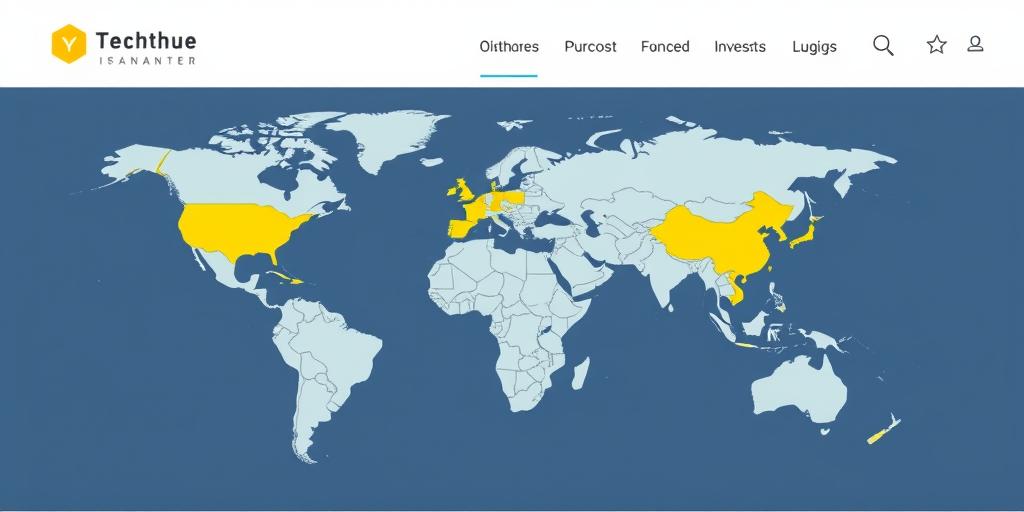Geographic Factors Influencing Foreign Investment
Foreign investment decisions are complex, influenced by a multitude of factors ranging from economic policies to political stability. However, geographic factors often play a pivotal, yet sometimes overlooked, role in attracting or deterring foreign direct investment (FDI). This post will explore several key geographic considerations that shape foreign investment patterns.
1. Natural Resources
One of the most apparent geographic factors is the availability of natural resources. Countries rich in oil, gas, minerals, timber, and fertile land tend to attract significant foreign investment. For example:
- Oil and Gas: Nations with substantial oil reserves, such as Saudi Arabia, Nigeria, and Venezuela, have historically drawn massive FDI from multinational energy corporations.
- Minerals: Countries like Australia, Brazil, and South Africa, abundant in minerals such as iron ore, gold, and diamonds, are attractive to mining companies.
- Agricultural Land: Regions with vast areas of arable land, like parts of South America and Eastern Europe, see investment in agribusiness and food processing.
The presence of these resources reduces the need for extensive exploration and extraction infrastructure development by investors, making these locations appealing.
2. Location and Accessibility
The geographic location of a country and its accessibility significantly impact its attractiveness for foreign investment. Factors to consider include:
- Proximity to Major Markets: Countries located near large consumer markets, such as those in the European Union or North America, often benefit from lower transportation costs and easier market access.
- Strategic Waterways: Nations controlling strategic waterways, like the Panama Canal or the Suez Canal, are vital for global trade and attract investment in logistics and shipping infrastructure.
- Coastal Access: Countries with extensive coastlines are better positioned for maritime trade, leading to investments in ports, shipbuilding, and related industries.
Accessibility facilitated by well-developed transportation networks reduces trade barriers and operational costs, enhancing investment appeal.
3. Climate and Environment
The climate and environmental conditions of a region can profoundly influence certain types of foreign investment:
- Tourism: Countries with attractive climates and natural landscapes, like those in the Caribbean or the Mediterranean, are magnets for tourism-related investment.
- Agriculture: Specific climatic conditions suitable for certain crops (e.g., coffee in Colombia or tea in India) draw investment in agriculture and related industries.
- Renewable Energy: Regions with high solar irradiance or consistent wind patterns attract investment in solar and wind energy projects.
However, adverse environmental conditions such as vulnerability to natural disasters (e.g., hurricanes, earthquakes) can deter investors due to increased risks.
4. Topography and Infrastructure
The physical features of a country and the development of its infrastructure are critical considerations:
- Ease of Construction: Flat, easily developable land reduces construction costs for factories, offices, and residential buildings.
- Infrastructure: Countries with well-developed infrastructure—roads, railways, ports, airports, and telecommunications networks—offer smoother operations and lower logistical costs.
- Urbanization: The presence of well-established urban centers with access to skilled labor, services, and markets is a significant draw for investors.
Conversely, challenging terrain, poor infrastructure, and inadequate urbanization can impede foreign investment.
5. Regional Integration and Trade Agreements
Geographic proximity often encourages regional integration and participation in trade agreements, which can significantly boost foreign investment:
- Trade Blocs: Membership in trade blocs like the European Union (EU), the North American Free Trade Agreement (NAFTA), or the Association of Southeast Asian Nations (ASEAN) reduces trade barriers and promotes cross-border investment.
- Cross-Border Projects: Proximity can facilitate joint infrastructure projects, such as cross-border pipelines or transportation corridors, attracting multinational investment.
Conclusion
Geographic factors exert a considerable influence on the flow of foreign investment. Understanding these elements is crucial for both policymakers seeking to attract investment and investors evaluating potential locations. Natural resources, strategic location, climate, topography, infrastructure, and regional integration all play critical roles in shaping investment decisions. By leveraging favorable geographic attributes and addressing limitations, countries can enhance their attractiveness as destinations for foreign investment, driving economic growth and development.









